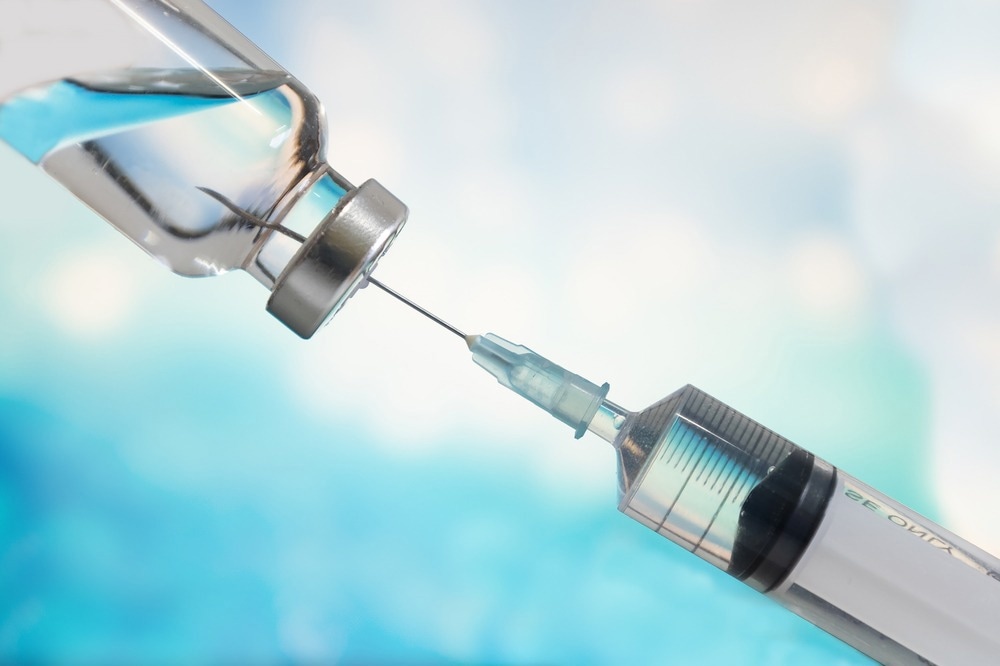In a recent article published in the journal PNAS, researchers in China provide evidence that a novel vaccine candidate known as CF501/RBD-Fc robustly neutralized severe acute respiratory syndrome coronavirus 2 (SARS-CoV-2) Omicron subvariants BQ.1.1 and XBB in a rhesus macaque animal model.
This vaccine comprised the human immunoglobulin G (hIgG) fraction, crystallizable (Fc)-conjugated receptor-binding domain (RBD) of the SARS-CoV-2 ancestral WA1 strain, in combination with a novel stimulator of interferon genes (STING) agonist-based adjuvant called CF501. The study findings confirm that CF501/RBD-Fc induced highly potent and persistent broad-neutralizing antibody (bnAb) responses against several SARS-CoV-2 variants, including Omicron subvariants.

Study: A pan-sarbecovirus vaccine based on RBD of SARS-CoV-2 original strain elicits potent neutralizing antibodies against XBB in nonhuman primates. Image Credit: MemoryMan / Shutterstock.com
Background
Due to their exceptional immune-evasion properties, Omicron subvariants pose a significant challenge to current coronavirus disease 2019 (COVID-19) vaccines. For example, the BA.5 subvariant is resistant to neutralization, even after four doses of a messenger ribonucleic acid (mRNA) vaccine. Moreover, the newly emerged XBB Omicron subvariant remains unneutralized by nAbs induced by a booster dose of the bivalent vaccine containing the mRNA sequences of the Omicron BA.5 and ancestral spike (S) proteins.
Previous studies using the pseudovirus neutralization assay have shown that, as compared to the ancestral strain D614G, XBB is up to 155-fold more resistant to nAbs in vaccinee sera. Thus, there remains an urgent need for a pan-sarbecovirus vaccine with the ability to neutralize current and yet-to-emerge SARS-CoV-2 variants.
About the study
In the present study, researchers administered three doses of CF501/RBD-Fc or Alum/RBD-Fc-based vaccines in two groups, each comprised of three rhesus macaques. Sera was subsequently collected to evaluate RBD-binding IgG and nAb titers through the use of an enzyme-linked immunosorbent assay (ELISA) and virus neutralization assays.
The researchers also tested whether sera from immunized rhesus macaques could neutralize pseudotyped Omicron subvariants. Each test animal's parameters were correlated by pairwise comparisons to assess the association between nAb and binding antibodies specific to Omicron subvariants XBB and BQ.1.1.
Results
At day 28, after two vaccine doses, endpoint RBD-specific IgG titers against Omicron subvariants in the CF501/RBD-Fc group ranged between 512,000 and 1,792,000. These values were nearly three- to 28-fold higher than that of the Alum/RBD-Fc group.
Although the endpoint titers gradually declined, they remained relatively stable and higher in the CF501/RBD-Fc group as compared to the Alum/RBD-Fc group. The magnitude of the RBD-binding antibodies remained consistently higher in the CF501/RBD-Fc group after three vaccine doses and remained high until day 191 following the first vaccination.
The 50% neutralizing titers (NT50) of bnAbs in sera from CF501/RBD-Fc macaques were much higher than those in the Alum/RBD-Fc group against all pseudotyped viruses, with NT50 values of 436 and 313 against BQ.1.1 and XBB at day 28, respectively. Cross-neutralizing bnAb titers in the CF501/RBD-Fc group continued to increase after the third vaccination, with day 122 NT50 values of 2,118 and 2,526 against BQ.1.1 and XBB after receipt of the first vaccine dose, respectively.
These titers also increased in the Alum/RBD-Fc group after three vaccine doses; however, these values marginally surged against BQ.1.1 and XBB. Eventually, NT50 values declined in both groups. The third vaccine dose did not elicit increased NT50 titers against D614G but drastically increased bnAb titers against the Omicron subvariants.
Although their NT50 against BQ.1.1 and XBB declined by 26.9- and 22.5-fold relative to D614G, respectively, these bnAbs effectively neutralized BQ.1.1 and XBB infection. Virus neutralization assay results also showed that CF501/RBD-Fc sera potently neutralized authentic BA.2.2 infection as compared to Alum/RBD-Fc sera. Immunofluorescence assay also confirmed that sera from CF501/RBD-Fc group potently inhibited Omicron BA.2.2 replication.
Conclusions
Overall, the study findings indicate that the CF501 adjuvant stimulated the conservative but nondominant RBD epitopes for generating bnAbs against pan-sarbecovirus vaccines. Thus, the researchers recommend replacing the adjuvant in the first-generation COVID-19 subunit vaccines with CF501 for next-generation booster vaccinations. This strategy might enhance the immune responses against SARS-CoV-2 Omicron subvariants BQ.1.1 and XBB, as well as future SARS-CoV-2 variants that have yet to emerge.
Journal reference:
- Liu, Z., Zhou, J., Wang, X., et al. (2023). A pan-sarbecovirus vaccine based on RBD of SARS-CoV-2 original strain elicits potent neutralizing antibodies against XBB in nonhuman primates. PNAS. doi:10.1073/pnas.2221713120